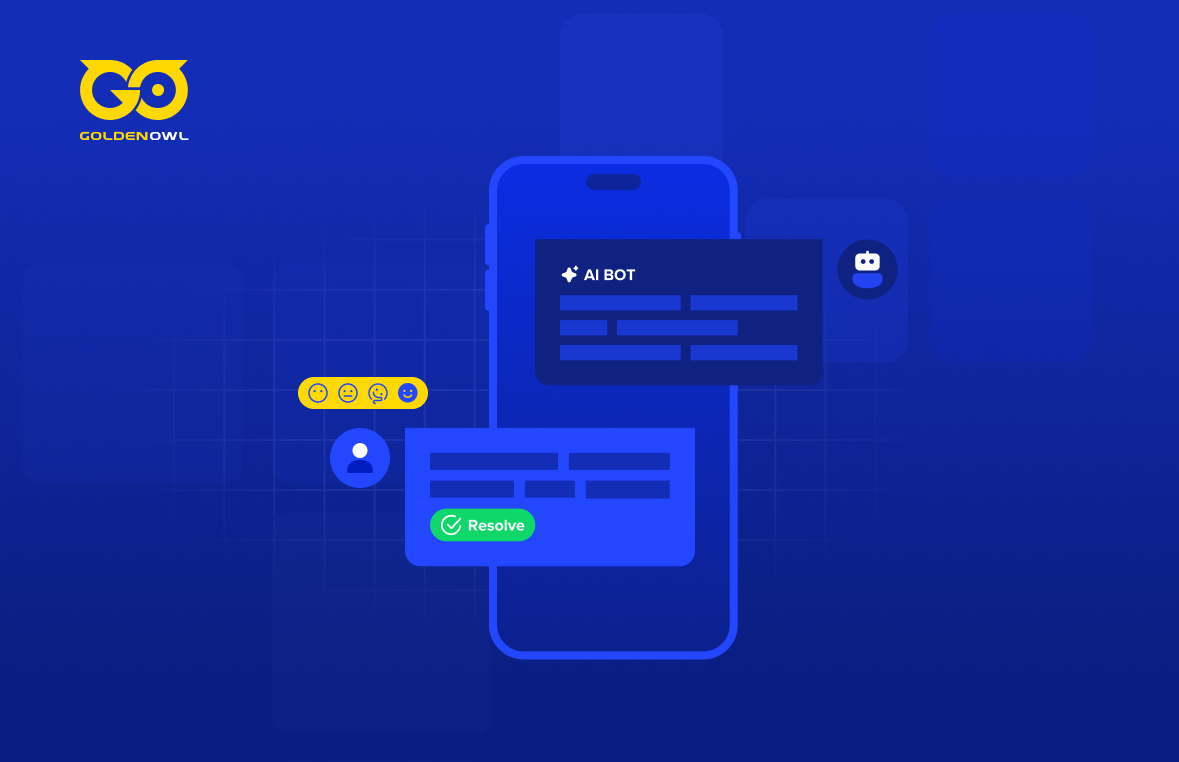UX tools can make or break your design project. Find out what they are, why they matter, and how to choose them in this ultimate article.
User experience (UX) design is the art of developing websites or apps that are user-friendly, pleasurable, and cater to the needs and expectations of the users. This process involves researching, testing, and refining various user interface aspects such as layout, navigation, functionality, content, and aesthetics.
To create compelling and captivating UX designs, you need to use various tools that can assist you in different stages of the design process. In this article, we will delve into the definition of UX tools, their significance, the types available, and how to select the most appropriate ones for your requirements.
Read more: UX Marketing: Definitions, Its Impacts & Key Aspects
What are UX Tools?
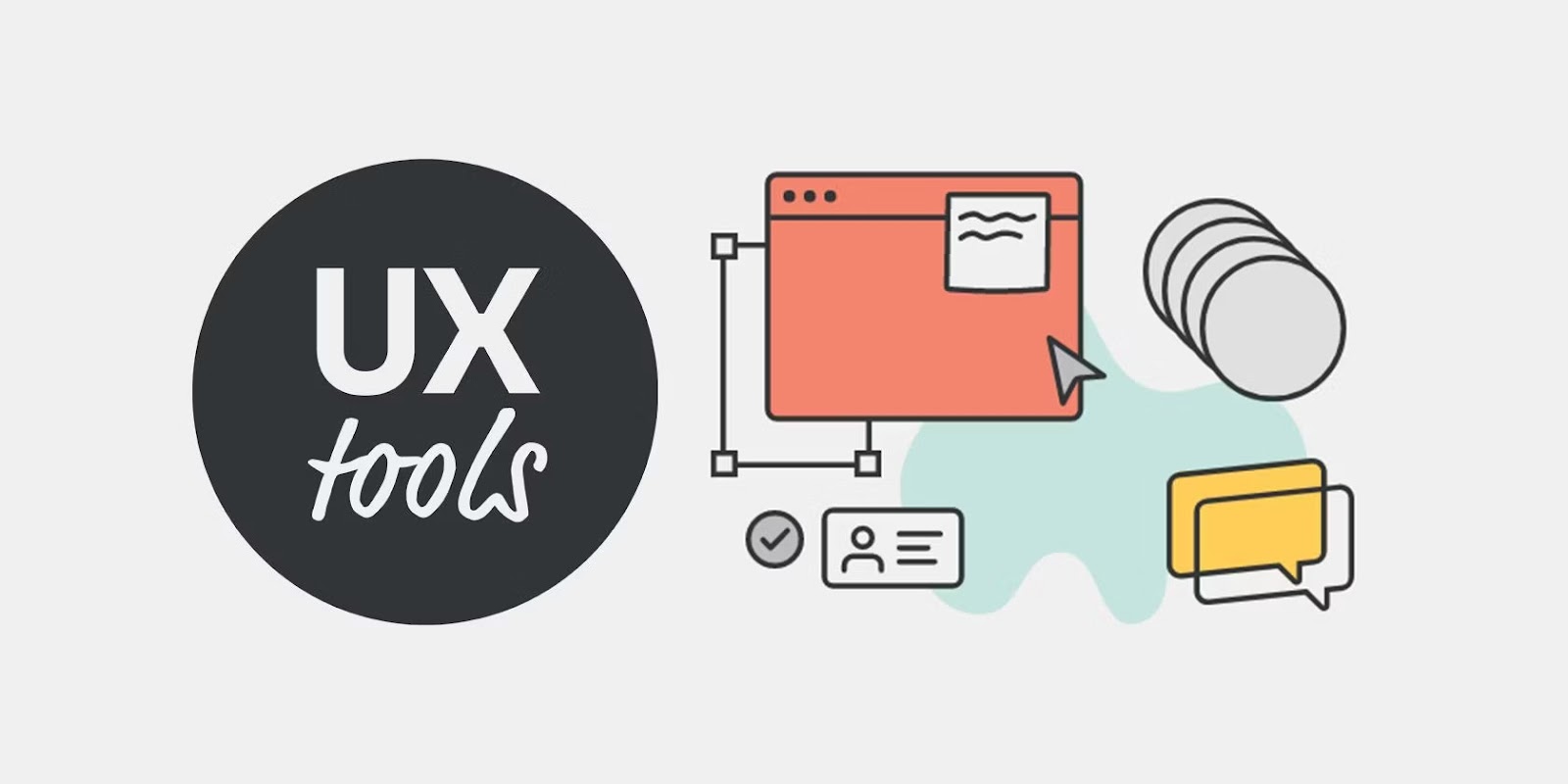
User experience (UX) tools are software applications or web-based services that can help you create better user experiences. You can use them for various tasks, including research, design, and testing.
UX tools are incredibly helpful for gathering data about user needs, which can then be used to inform the design process. In addition, they allow you to create wireframes, prototypes, and mockups that help visualize the user experience and proactively identify potential issues. UI/UX tools are also helpful in testing user interfaces with real users. As a result, you have valuable feedback that you can use to improve the design before the product is launched.
Read more: What Is UI UX? An Essential Guide With Career Advices
5 Types of UX Tools You Should Know
Many types of UX design tools are available, each with its features, functions, and advantages. Depending on the project's purpose, scope, and complexity, you may need to use more than one tool. Here are the most common and popular ones:
Wireframing
These tools specialize in creating low-fidelity sketches and outlines of the UI, displaying each screen or page's basic structure, layout, and elements. They are ideal for designers who want to rapidly and easily visualize and communicate their ideas, as well as to test and refine them before moving on to higher-fidelity designs. Some examples of sketching tools for UX include Balsamiq, Wireframe.cc, and Mockflow.
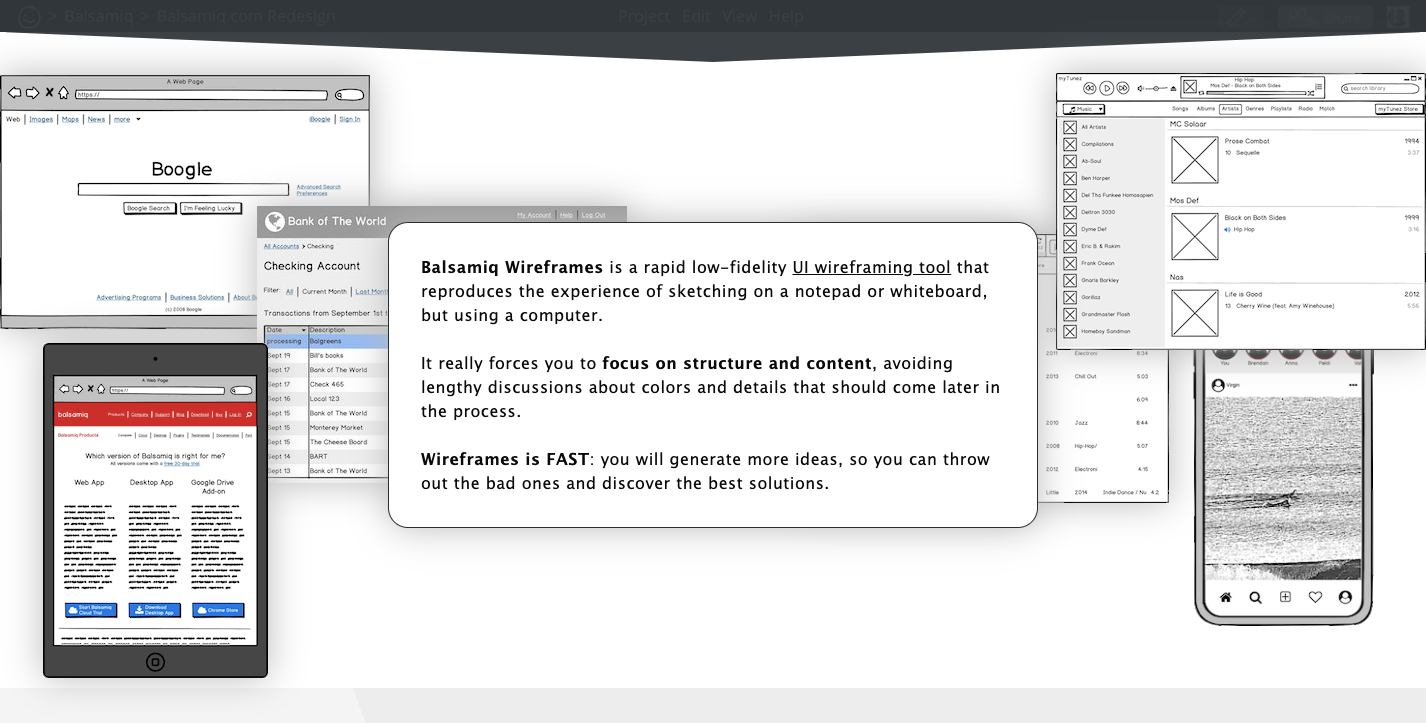
Balsamiq
Prototyping
Professionals often depend on these tools to create high-fidelity mockups and simulations that showcase the UI's appearance, functionality, and interactivity. They are ideal for testing and validating designs, as well as demonstrating them to stakeholders for feedback. Some popular examples are InVision, Marvel, and Framer.
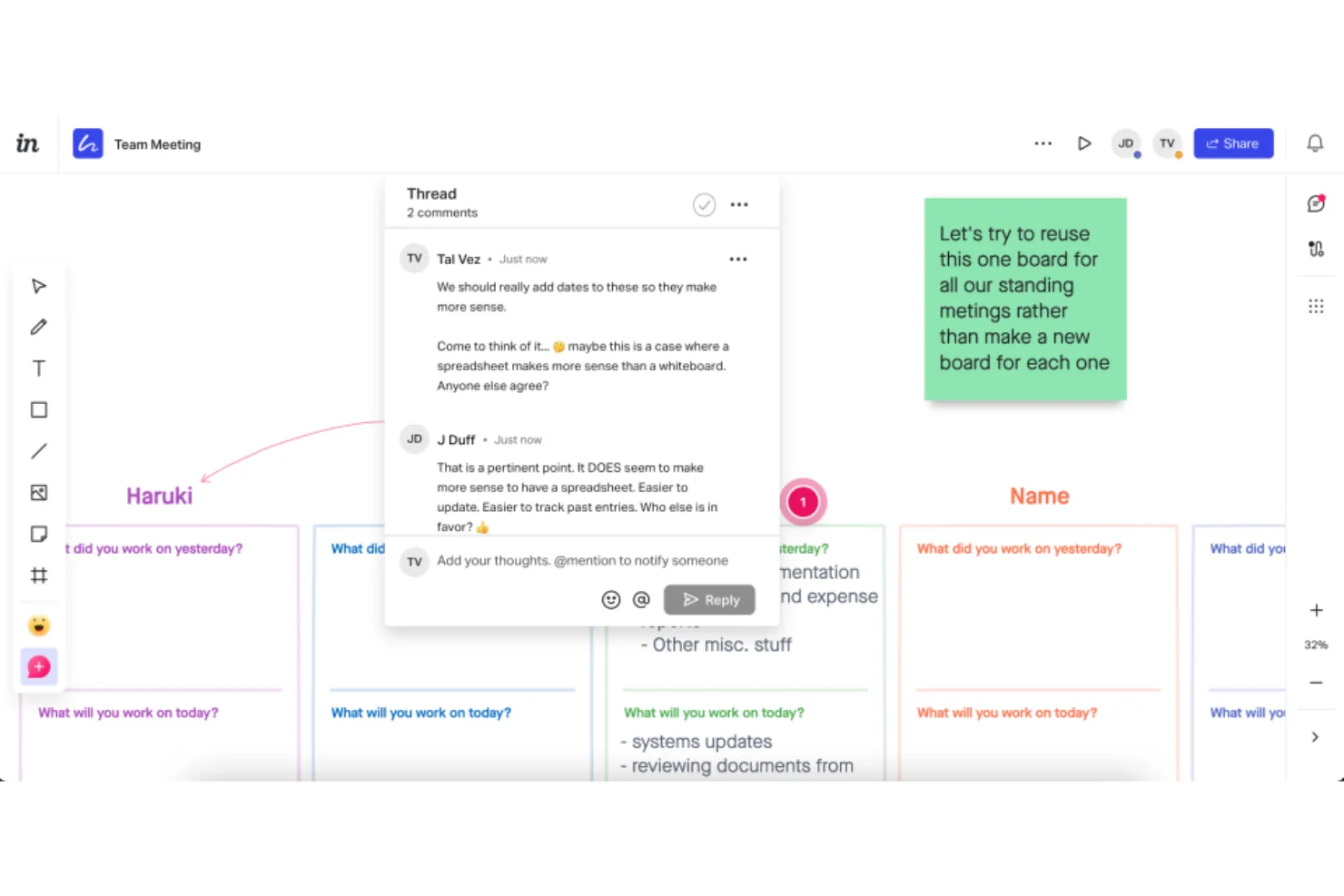
InVision
User-Testing
Evaluating a UI's usability, effectiveness, and satisfaction is crucial for designers. This is where tools specialized in user testing come in handy. They help you observe and collect feedback from real potential users. Therefore, you can identify and fix any problems with your designs. You can also measure and improve the overall user experience. Examples of user-testing UX tools include Hotjar, UserTesting, and Lyssna.
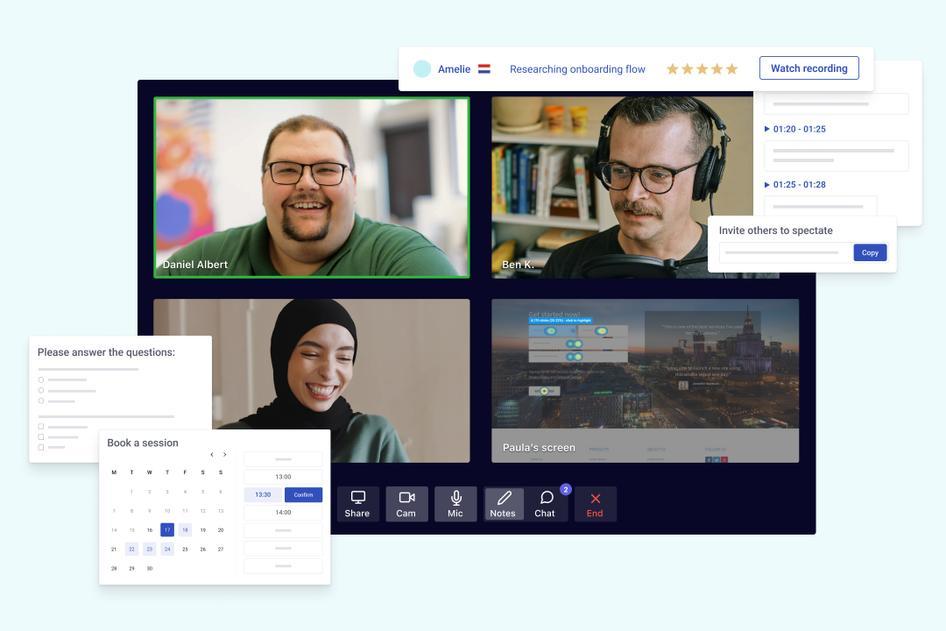
Conduct user interviews with Hotjar Engage
Collaboration
UX designers often collaborate with other team members—such as developers—to create and enhance user interfaces. Collaboration tools cater to this need by providing professionals with platforms to share ideas and discuss and coordinate work. Examples of such UX tools include Miro, Slack, and Drive.
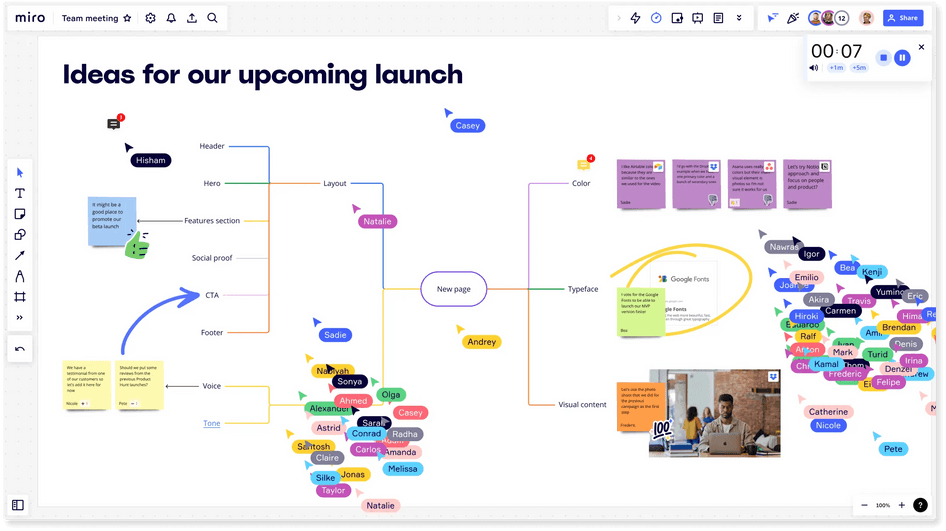
Miro’s whiteboard
All-in-One
As you can see, UX Designers have to use various tools to finish the whole UX design process, from wireframing to polished interactive prototypes. However, all-in-one tools like Figma, Adobe XD, and Sketch provide a seamless and integrated workflow. As a result, you do not need to switch between different platforms and formats. Therefore, they are highly recommended for designers who prioritize efficiency and convenience.
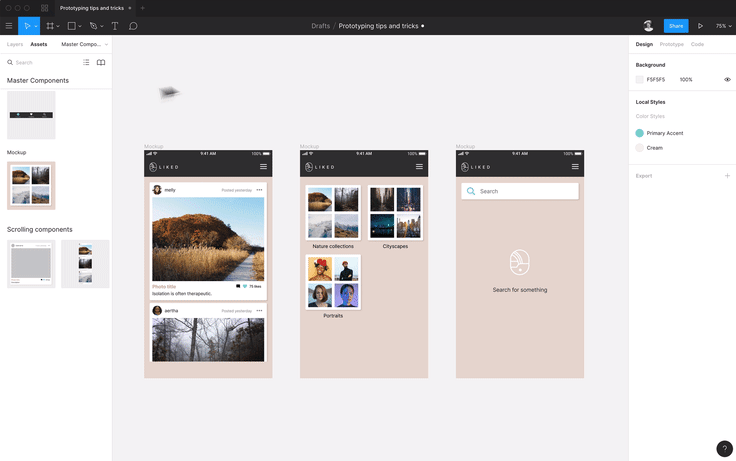
Figma
Why Are Using the Best UX Design Software Important?
UX tools are essential because they help you create and improve the user experience of your websites or apps faster, easier, and more efficiently. They provide various benefits, including:
Saving Time and Money
Using UI/UX tools can help you save both time and money by reducing the need for manual work, repetitive tasks, and expensive resources.
For instance, wireframing and prototyping tools enable you to create and test designs quickly and easily without coding or hiring developers. Similarly, user testing tools can aid you in collecting and analyzing user feedback without the need to recruit participants or travel. Meanwhile, collaboration tools help you work together and communicate effectively without meeting in person.
Improving Quality and Consistency
UX tools can be incredibly useful in improving the quality and consistency of your designs. They provide guidance, standards, and best practices that help you create designs that are easy to use, aesthetically pleasing, and practical.
For example, wireframing and prototyping tools can assist you in adhering to UX design principles. User testing tools can help you evaluate and optimize your user satisfaction using metrics and benchmarks. Finally, collaboration tools can help you maintain and keep your designs up-to-date by providing features like version control, history, and syncing.
Enhancing Creativity and Innovation
Utilizing UX design tools allows you to boost your creativity and innovation by exploring and experimenting with various ideas, solutions, and features.
For instance, wireframing and prototyping tools enable you to generate and test multiple concepts, variations, and scenarios. Likewise, user testing tools allow you to discover and comprehend your users' needs, preferences, and behaviors by utilizing personas, journey maps, scenarios, and other techniques. Lastly, collaboration tools facilitate you to learn from and get inspired by others by providing access to templates, examples, and valuable feedback.
How to Choose the Right UX Tools for Your Needs
Choosing the right tools for your needs can be challenging and overwhelming, given the variety and diversity of options available. Fortunately, some factors and criteria can help you narrow your choices.
Your Goals and Objectives
The first thing you should consider when selecting UX tools is your goals and objectives. What are you trying to achieve with your design project? What are the problems or challenges you are trying to solve? What are the outcomes or results you are expecting?
These questions help you define the scope and purpose of your design project. As a result, you can effortlessly select the right tools that can help you accomplish them.
Your Users and Audience
The second thing you should consider is your users and audience. Who are you designing for? What are their needs, preferences, and expectations? How do they behave, interact, and communicate? By answering these questions, you will better understand and empathize with your users and choose the tools that will help you create and improve their experience.
Your Budget and Resources
In addition, it is crucial to consider your budget and available resources. How much money and time do you spend on your design project? What limitations or constraints do you have to deal with? Doing so can save time and money and optimize your productivity and resource usage.
Your Skills and Expertise
Assessing your skills and expertise is a crucial factor to consider when selecting design tools. How proficient and experienced are you in UX design? What are the skills and knowledge you have or need to learn? Doing so lets you determine which ones would be most beneficial for enhancing your creativity and advancing your growth.
Your Preferences and Style
The final thing you should consider is your preferences and style. What features and functions do you like or dislike in UX tools? What aesthetics and visuals do you prefer or avoid? These questions help you express and refine your preferences and style. The right UX design software lets you enjoy and have fun with your project.
Conclusion
As you can see, using the best UX design software is essential. By using the right tools, you can create products that are easy to use, enjoyable to interact with, and meet the target audience's needs.
Therefore, we hope that this article has given you a better understanding of UX tools. If you have any questions, please feel free to leave a comment below.





















